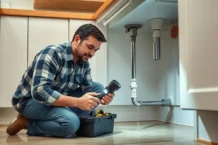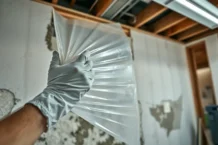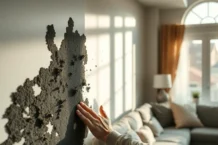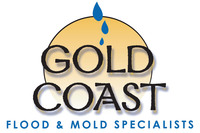
Understanding Insurance Coverage for Mold Damage – Gold Coast San Diego Specialists
Are you aware that mold damage might not be covered by your homeowner’s insurance policy? It’s a shocking realization that many homeowners face when they discover the extent of the damage caused by mold growth. Understanding insurance coverage for mold damage is crucial for protecting your home and your family. In this article, we will explore the factors that determine whether your homeowner’s policy covers mold damage, helping you make informed decisions about your insurance coverage. One of the key factors to consider is the cause of the mold growth.
Most homeowner’s policies cover mold damage caused by sudden and accidental water incidents, such as a burst pipe or a faulty appliance. However, coverage for mold damage resulting from long-term moisture issues, such as leaks from aging plumbing or inadequate ventilation, is often excluded. It’s essential to review the specific language in your policy and talk to your insurance provider to ensure you have the right coverage.
y understanding the intricacies of insurance coverage for mold damage, you can proactively protect your home and avoid costly surprises. Let’s delve into the world of insurance coverage for mold damage and ensure that your homeowner’s policy has you covered.
Understanding Insurance Coverage for Mold Damage: Does Your Homeowners Policy Have You Covered?
Types of Mold Damage Covered by Homeowners Insurance
As a homeowner, the discovery of mold growth in your property can be a nightmare. Not only does it pose a serious health risk, but the cost of remediation can be staggering. When it comes to homeowners insurance, the coverage for mold damage can be a complex and often misunderstood topic.
The good news is that many homeowners policies do provide some level of coverage for mold damage, but the extent of that coverage can vary significantly. The key is to understand the specific terms and conditions of your policy, as well as the underlying causes of the mold growth.
In general, homeowners insurance is more likely to cover mold damage that is the result of a sudden and accidental water incident, such as a burst pipe or a faulty appliance. These types of events are typically considered “covered perils” under most homeowners’ policies, and the resulting mold damage would be eligible for coverage. However, it’s important to note that there may be limits on the amount of coverage provided, and the policy may require you to take immediate action to mitigate the damage.
Exclusions and Limitations in Homeowners Insurance Policies
On the other hand, mold damage that is the result of long-term moisture issues, such as leaks from aging plumbing or inadequate ventilation, is often excluded from homeowners insurance coverage. These types of situations are typically considered to be the result of a lack of maintenance or a gradual deterioration of the home, which are not covered under most standard homeowners’ policies.
Additionally, some homeowner’s policies may have specific exclusions or limitations when it comes to mold coverage. For example, some policies may only provide coverage for mold damage up to a certain dollar amount, or they may require the homeowner to take specific steps to prevent or mitigate mold growth before coverage will apply.
It’s important to carefully review your homeowner’s insurance policy to understand the specific terms and conditions related to mold coverage. This may involve reading through the fine print or talking to your insurance provider to get a clear understanding of what is and is not covered. By doing so, you can ensure that you have the appropriate coverage in place to protect your home and your family in the event of a mold-related incident.
Additional Coverage Options for Mold Damage
If your homeowner’s insurance policy does not provide adequate coverage for mold damage, there may be additional options available to you.
One possibility is to purchase a separate mold or fungus endorsement or rider, which can be added to your existing homeowner’s policy for an additional premium.
These endorsements or riders typically provide more comprehensive coverage for mold-related issues, including the costs of testing, remediation, and even temporary relocation if necessary. They may also have higher coverage limits than what is included in the standard homeowner’s policy.
Another option is to consider a standalone mold insurance policy, which is designed specifically to provide coverage for mold damage and related issues. These policies can be a good choice for homeowners who live in areas with a high risk of mold growth, or for those who have already experienced mold-related problems in their homes.
It’s important to carefully compare the coverage options and premiums for any additional mold insurance products to ensure that you are getting the best value for your money.
You may also want to consult with a licensed insurance agent or broker to get their professional advice on the best coverage options for your specific needs

Steps to Take in the Event of Mold Damage
If you discover mold growth in your home, it’s important to act quickly to address the issue and minimize the potential for further damage. The first step is to identify the source of the moisture that is causing the mold growth and take immediate steps to stop the leak or fix the underlying problem.
This may involve repairing a leaky pipe, fixing a faulty appliance, or improving the ventilation in your home. Addressing the root cause of the moisture issue is crucial, as it will help prevent the mold from continuing to grow and spread.
Once the moisture source has been addressed, you’ll need to begin the process of mold remediation.
This typically involves hiring a professional mold remediation company to assess the extent of the damage and develop a plan for safely removing the mold. The remediation process may involve the use of specialized equipment, such as air scrubbers and dehumidifiers, as well as the disposal of any contaminated materials.
It’s important to document the entire process, including any repairs or remediation work that is performed, as this documentation may be required when filing a claim with your homeowner’s insurance provider. Be sure to keep detailed records of all expenses related to the mold damage and remediation, as well as any communication with your insurance company.
Tips for Preventing Mold Damage in Your Home
While mold damage can be a serious and costly issue, there are steps you can take to prevent it from occurring in the first place.
One of the most important things you can do is to maintain a healthy indoor environment by controlling moisture levels and ensuring proper ventilation throughout your home.
This may involve regularly checking for and addressing any leaks or moisture issues, using dehumidifiers or air conditioning to control humidity levels, and ensuring that your home’s ventilation system is functioning properly. It’s also important to keep an eye out for any signs of mold growth, such as discoloration on walls or ceilings, and to address any issues promptly.
Another important step in preventing mold damage is to be proactive about home maintenance and repairs. This may include regularly inspecting your home’s plumbing, roof, and other systems to identify and address any potential issues before they lead to moisture problems and mold growth. It’s also a good idea to keep your home clean and well-maintained, as this can help reduce the risk of mold growth.
In addition to these practical steps, it’s also important to educate yourself about the potential risks of mold and the steps you can take to protect your home and your family. This may involve reading up on the latest research and best practices for mold prevention and remediation or consulting with a professional mold inspector or indoor air quality expert.
Conclusion
Mold damage can be a serious and costly issue for homeowners, but understanding your insurance coverage and taking proactive steps to prevent mold growth can help you protect your home and your family. By carefully reviewing your homeowner’s insurance policy, exploring additional coverage options, and implementing effective mold-prevention strategies, you can ensure that your home is protected in the event of a mold-related incident.
Remember, the key to effective mold damage prevention and coverage is to be proactive and vigilant.
Stay informed, work closely with your insurance provider, and take immediate action to address any moisture issues or signs of mold growth in your home. With the right approach, you can enjoy the peace of mind that comes with knowing your home is protected from the costly and potentially hazardous effects of mold damage.









Follow Us!